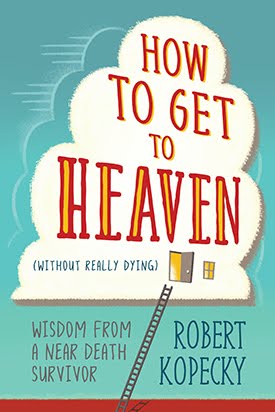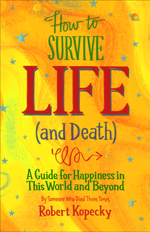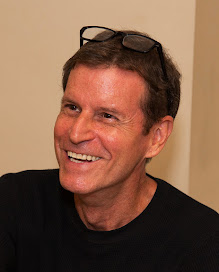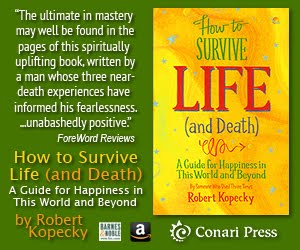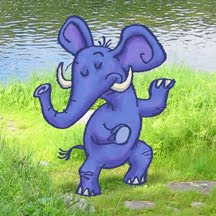"A human being is part of the whole, called by us "Universe," a part limited in time and space. He experiences himself, his thoughts and feelings, as something separated from the rest - a kind of optical delusion of his consciousness. This delusion is a kind of prison for us, restricting us to our personal desires and to affection for a few persons nearest to us. Our task must be to free ourselves from this prison by widening our circle of compassion to embrace all living creatures and the whole of nature in its beauty."
Albert Einstein
Different from other pop-pundits, I feel that as a “spiritual” writer commenting on material subjects like politics or contemporary culture, I should probably preface my commentary with a few qualifications; otherwise it may be hard[er] to accept that my observations come from an authentically “spiritual” perspective. Before I share my “spiritual” thoughts about Mr. Trump and those devoted to him, let me first give you some “material” backstory.
Believe it or not, I survived three “Near-Death Experiences” over about fifteen years – you know, those other-worldly experiences where a person claims to briefly visit a crazy, beautiful “heavenly” existence beyond this crazy, beautiful human one.
In my first, I was knocked out of my body in a serious car accident and witnessed life on earth from about thirty feet above it. I “returned” with a literal spiritual Perspective on our lives as human beings – where we all channel a kind of divine life force through this “material” body-form we occupy. I returned to the crash scene later and confirmed parts of those surroundings that I could only have seen from the top of a light pole.
In my second, while living a downtown Manhattan life of self-destructive excess, I collapsed in a physical shut-down and was enfolded in a brilliant cloud where I was presented with some of the places I’d badly screwed-up in my life – like in an interactive movie that was hard to watch. I returned from that realizing the power of Presence – the power of each moment’s profound truth and singular potential, the awareness that awakens it, and the unconsciousness that can destroy it as in passes by in a flash.
In third and last (knock on wood), I was ambushed – knocked-out and severely beaten, stomped, and kicked by skinheads who mistakenly thought I was gay. I found myself in a safe, womblike place, surrounded by loving spirits who gently forced me back into this life, to naturally fulfill a kind of karmic “mission” that I still had to complete. I came back with a new Purpose, and after nearly ten years of volunteering in a New York City hospital, and thousands of hours of meditation and study, I became the author of two books, and an adviser and speaker dedicated to helping folks understand that there’s a lot more to this whole thing than meets the eye. At age 58, I’d found a greater reality…the hard way.
Like many experiences, spirituality is anecdotal – there’s no real way to prove to anyone else what needs no more proof to the experiencer. These are my true experiences, and they’ve understandably changed the way I live as a result of learning those three very difficult lessons. In the intervening years, I’ve worked with lots of people in various parts of Life – usually difficult parts – with questioning people, with crashing people, with dying people. I believe these experiences have (gratefully) given me a peculiarly valid kind of insight.
Basically, I view us as being expressions of the same Divine Consciousness – of all really being more or less the same thing here, expressing itself through each of our unique forms, filtered through our ancestry, our genetic make-up, our life experiences, our cultural biases. In this way, everyone, from the chillest swami to the biggest hothead, is expressing something we all know about – parts of a collective “self” we can all identify with. Everyone finds themselves at a certain level of awareness about ourselves and the world and behaves in a way that our personal level of consciousness dictates. With that in mind, I find acceptance, compassion, and forgiveness become the most important ways to work with each other; and kindness, honesty, and humility the most important principles we can bring to our own lives.
That’s my “spiritual” backstory…and here’s my personal experience and observations about Trump and his devotees.
My own personal “transformation” occurred at the same time as I personally witnessed the events of 9/11, in New York City. I had lived there for more than twenty years leading up to that day – mostly years of material success, physical excess, and spiritual emptiness. I had many occasions to intersect life-paths with Donald Trump and his kind (while not nearly so well-financed, our interests did coincide in a number of ways, at that time). For years a close friend was a big TV Soap Opera star, and when I was with him, lots of strange and exclusive doors were opened.
During those years I knew Trump as many New Yorkers knew him – objectively speaking – as a spoiled rich kid (his dad owned thousands of apartments in NYC) who was viewed as a selfish, lascivious, hedonistic con artist of sorts, and a guy who kept the company of pretty much the worst kind of people imaginable. I had no direct, personal experience of him other than the consistently negative things I heard through the local media (which I was a part of), although I did have three close friends who’d all had direct dealings with him, so I only had one “degree of separation.”
It was always telling that everyone who worked for Trump in any way had to sign a Nondisclosure Agreement, guaranteeing they would not speak of any personal experience with him under threat of litigation.
In the 80s a relative of ours was severely injured by part of a Trump building that illegal (former Soviet-bloc, non-union) workers collapsed on them while they were walking down the street; followed by years of attested persecution and personal vilification by Trump and his lawyers, and costly legal complications that Trump eventually lost.
Another close friend was hired to provide a professional service for a Trump project but quit when they refused to commit crimes (in furtherance of a massive Ponzi scheme) on behalf of Trump and his company. That company was subsequently shut down and ruled to be a criminal fraud. Trump settled that case by paying $26 million to his victims.
My third example is of a friend who was a Gulf War veteran who came home to start a business doing extremely dangerous maintenance jobs, which they had fairly contracted with Trump to do. After the work was done they invoiced the company as usual, only to receive a response that Trump had decided the job wasn’t worth the agreed-upon fee, and that they would either accept half the amount as payment-in-full or have the option to pursue the matter in court – and have their reputation as a service provider ruined throughout Trump’s extensive network of property owner contacts.
These are direct, second-hand testimonials of friends that I absolutely believe – in fact two of them were definitively documented by the media. Those weren’t anecdotal experiences to me – they are objective truths that formed my impression of Mr. Trump, along with the knowledge around town that he had been documented as a racist, a dirty landlord, and a serial molester. NYers knew that his mentor had been the notorious Roy Cohn (mob lawyer and Joseph McCarthy’s righthand man), and that he hung around with drug abusers, gangsters, and deviants (like his longtime “party pals,” convicted pedophiles Jeffrey Epstein and John Casablancas). The Trump family had earned a thoroughly disreputable, even criminal reputation in financial matters, and Donald was demonstrably a pathological liar and failed businessman, and anecdotally considered a drug addict (known in those circles to abuse cocaine and other substances), a likely sexual deviant, and a low-grade gangster himself – turned into a TV reality star by a savvy British TV producer named Mark Burnett.
As a media professional myself, the stories that circulated in production circles out of Trump’s NBC TV show told a sordid story that supported many of the worst impressions possible. In the 2016 presidential election, Trump lost his home town of New York City by a resounding 84 to 16%. Clearly, the great majority of New Yorkers who knew him best had formed a justifiable distrust and distaste for the man.
Given the evidence of his administration (including the unnecessary loss of over ONE MILLION American lives) and his irrationally traitorous behavior since he definitively lost the election, I believe this represents a pretty accurate representation of a sociopath who has created so much chaos, division, and anxious, fearful preoccupation – something that none of us need in our already challenging lives. It is the profile of a desperately damaged individual, who despite deserving the full measure of our compassion, is nonetheless a very poor (even dangerous) candidate for any position of leadership and responsibility, having stated his desire to end American democracy and align himself with criminal dictators Putin (with whom he has a long history), Xi, Orban, and others. Still, we must avoid reactionary judgements.
"Once you label me, you negate me.”
Attributed to Kierkegaard
While these facts and impressions have formed my “material” profile of the man; and knowing that they’re available to everyone (including his daily statements and behaviors), it has always been difficult to understand how so many fellow Americans – particularly smart, otherwise good-hearted friends within my own “spiritual” circles, can harbor a kind of elevated respect and even absolute devotion that they seem to feel for a man who is objectively a criminal deviant – a victim of extremely dark karma, including likely childhood abuse in the same forms as he is known to have inflicted on his own children. It’s abuse that I suffered in childhood too, so I don’t speak from judgement, but from painful identification.
This phenomenon is fairly simply and directly described by the idea that we’re in a kind of ‘school of spiritual evolution,’ that sixth-graders through first-graders are attending simultaneously (I think I was expelled from an early grade…). Trump supporters are ‘first-graders,’ observably disturbed – objectively angry, aggressive, cognitively dissonant people; people who are likely to have suffered difficult, even abusive childhoods (like Trump); marked by alcoholism and drug-abuse, racist beliefs, feelings of unjust victimization, and beliefs of religious superiority and entitlement. Their spiritual surrender is incomplete, so they experience only a fearful God, not a God of absolute tolerance and pure Love. The degree to which they wish to control life is proportional to their level of suffering, and proportional to the level of violence that seems justified to permit their efforts to control the uncontrollable. Trump excites, focuses, and expresses this dark energy for them on a larger stage.
The elite corporatists and their professional media-shapers know this, and easily manipulate this ‘base’ of devotees, unconsciously driven by their own delusional, incomplete mythology. They know that people of constrained consciousness can be directed by their fears, and have made a science out of convincing them the corporate cause is to their own benefit, when in fact the opposite is true. For them, it’s all about money, power, and the selfish exploitation of our planet’s resources – they are the ‘second-graders’ who are the true creators of the Earth’s current theater of suffering.
What you can do is to organize, take action, vote, identify and forgive, provide evidence of the unseen consciousness alive in everything, and remove the obstacles from Love flowing in, around, and through all of our gorgeous life on this amazing planet.
VOTE to prevent the spread of ignorance and evil unconsciousness. VOTE to advance our spiritual evolution and to give our species a chance to help restore balance to the world. Step into the light, look at the real condition of the Earth, and VOTE like all the current life of the planet depends on it…because at this point in human history, it does.
Read about concepts like these and much more in: How to Get to Heaven (Without Really Dying), Wisdom From a Near-Death Survivor from Llewellyn Worldwide available direct on this page, or online. The first book: How to Survive Life (and Death), A Guide To Happiness In This World and Beyond is available the same ways – but ask for it at your local bookstore!









